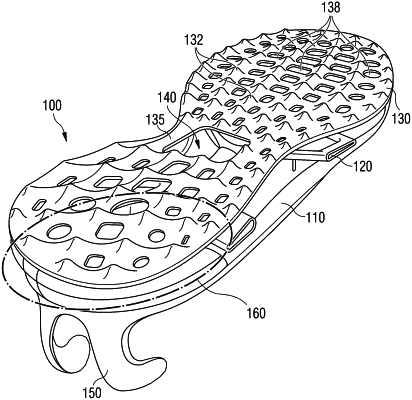| CPC A43B 13/125 (2013.01) [A43B 13/14 (2013.01); A43B 13/181 (2013.01); A43B 13/186 (2013.01); A43B 13/187 (2013.01); A43B 13/188 (2013.01)] | 20 Claims |

|
1. A method for forming a sole for a shoe, the method comprising:
a. cutting a customized control element from a blank, wherein the cutting comprises laser cutting, die cutting, water jet cutting or computer numerical control (CNC) cutting, wherein the customized control element is free from expanded material;
b. integrally-forming a cushioning element comprising an expanded material in the form of randomly arranged expanded particles which have substantially retained their individual particle shapes in the integrally-formed piece, the cushioning element comprising a first region and a second region; and
c. affixing the customized control element to a cushioning element;
d. wherein the customized control element comprises a first control region proximate to the first region and a second control region proximate to the second region;
e. wherein the first control region has at least one of the following features as compared to the second control region: (i) protrusions that are greater in size as compared to protrusions in the second control region, different hardness than in the second control region, and/or different expansion than in the second control region, or (ii) bulges that are greater in length, thickness, and/or structure as compared to bulges in the second control region, and
f. wherein, under shear, the first control region engages with the first region of the cushioning element by selectively increasing the penetration of the at least one feature into the cushioning element positioned proximate the at least one feature, wherein the increased penetration reduces shearing motions within the first region to a greater extent than the second control region reduces shearing motions within the second region.
|